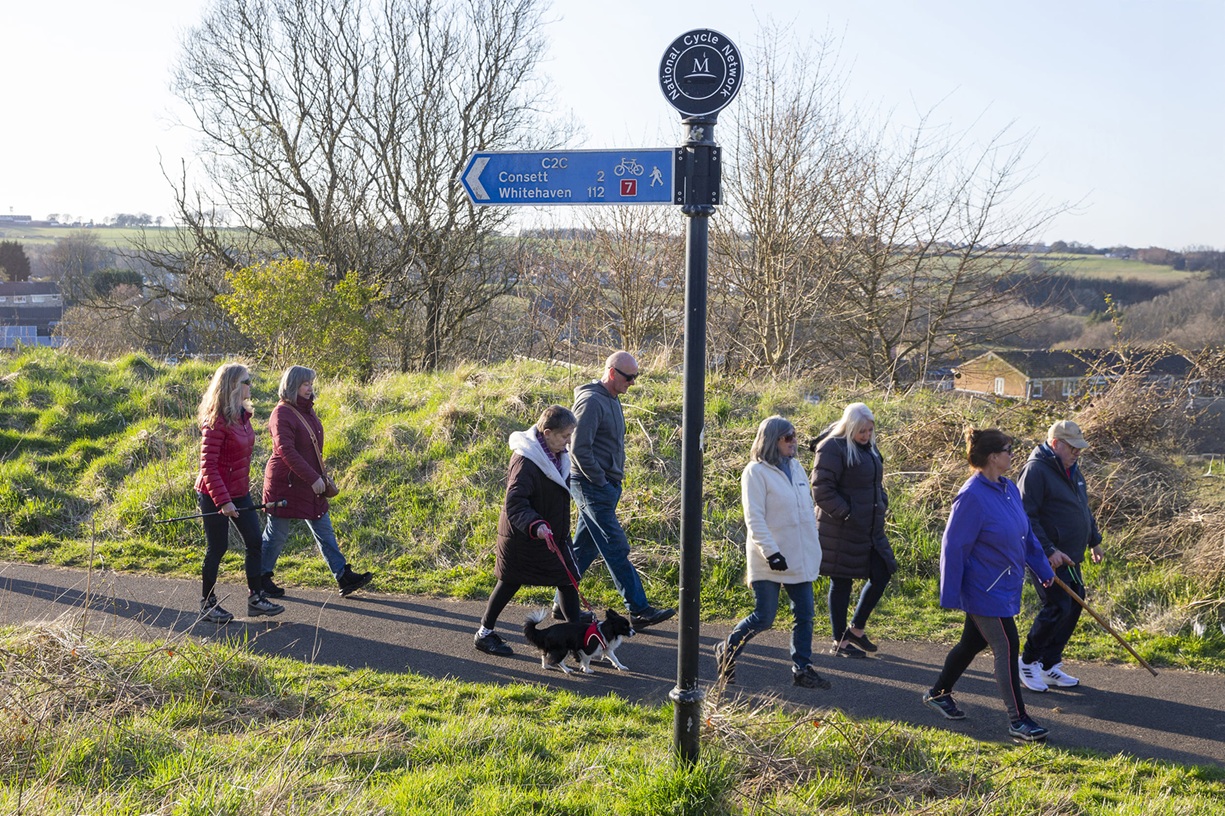Science
Richard Judd Inspires Community Through Walking and History

Richard Judd, a dedicated walker and local historian, has become a vital figure in the Leadgate community, fostering connections and promoting wellbeing through his popular walking group. Originally from the South Coast, Richard moved to the North East over a decade ago, exchanging seaside strolls for countryside adventures.
Building Community Through Walking
In 2016, Richard established a Saturday walking group that now attracts around 20 participants each week. While many join for the exercise, a significant number are drawn to the social aspect, enjoying the chance to chat and connect with others. Richard also organizes summer strolls in the evenings, allowing walkers to enjoy the beauty of golden-hour light.
“It’s not just about steps,” Richard states. “It’s about smiles, stories, and showing up for each other.” His approach emphasizes the importance of community support and camaraderie, making each walk an opportunity for participants to engage with one another and share their experiences.
Promoting Health and Wellbeing
Richard advocates for walking as a powerful means to enhance mental and physical health, particularly when done in a group setting. Over time, his walking initiative has become a lifeline for many residents, providing structure and a reason to venture outside. Known for his friendly demeanor and knack for uncovering local treasures, Richard takes delight in guiding others through hidden paths and historical landmarks.
Beyond his walks, Richard is actively involved in preserving the local history of Consett. He contributes to the History of the Consett Steelworks Facebook group, where he shares intriguing facts, rare images, and stories that connect community members with their industrial heritage. Whether posting about a long-gone blast furnace or highlighting residents’ childhood memories, Richard’s efforts keep the area’s history vibrant and accessible.
Community Contributions with the Consett Lions
In 2024, Richard expanded his community involvement by joining the Consett Lions as secretary. This role allows him to support various charitable initiatives, including the Great North Air Ambulance, Marie Curie, local grassroots football teams, and eye care charities that provide recycled glasses for those in need in Africa.
Through the Lions, Richard plays a part in making a tangible difference both locally and globally. His commitment to charity reflects his deep-rooted belief in community spirit and collective action.
Richard Judd’s unwavering enthusiasm and dedication to his community shine through in all his endeavors. Whether leading a walking group or exploring historical archives, he embodies the values of generosity, humour, and genuine passion. His contributions, both large and small, highlight the essence of community engagement and the importance of supporting one another.
-

 World2 weeks ago
World2 weeks agoCoronation Street’s Shocking Murder Twist Reveals Family Secrets
-

 Entertainment1 week ago
Entertainment1 week agoAndrew Pierce Confirms Departure from ITV’s Good Morning Britain
-

 Entertainment5 months ago
Entertainment5 months agoKate Garraway Sells £2 Million Home Amid Financial Struggles
-

 Entertainment4 months ago
Entertainment4 months agoAnn Ming Reflects on ITV’s ‘I Fought the Law’ Drama
-

 Entertainment1 month ago
Entertainment1 month agoCoronation Street Fans React as Todd Faces Heartbreaking Choice
-

 Health4 months ago
Health4 months agoKatie Price Faces New Health Concerns After Cancer Symptoms Resurface
-

 World1 month ago
World1 month agoBailey Announces Heartbreaking Split from Rebecca After Reunion
-

 Entertainment2 weeks ago
Entertainment2 weeks agoTwo Stars Evicted from I’m A Celebrity Just Days Before Finale
-

 World2 weeks ago
World2 weeks agoKevin Sinfield Exceeds Fundraising Goal Ahead of Final Marathons
-

 Entertainment4 months ago
Entertainment4 months agoCoronation Street’s Carl Webster Faces Trouble with New Affairs
-

 Entertainment4 months ago
Entertainment4 months agoWhere is Tinder Swindler Simon Leviev? Latest Updates Revealed
-

 Entertainment5 months ago
Entertainment5 months agoMarkiplier Addresses AI Controversy During Livestream Response





















